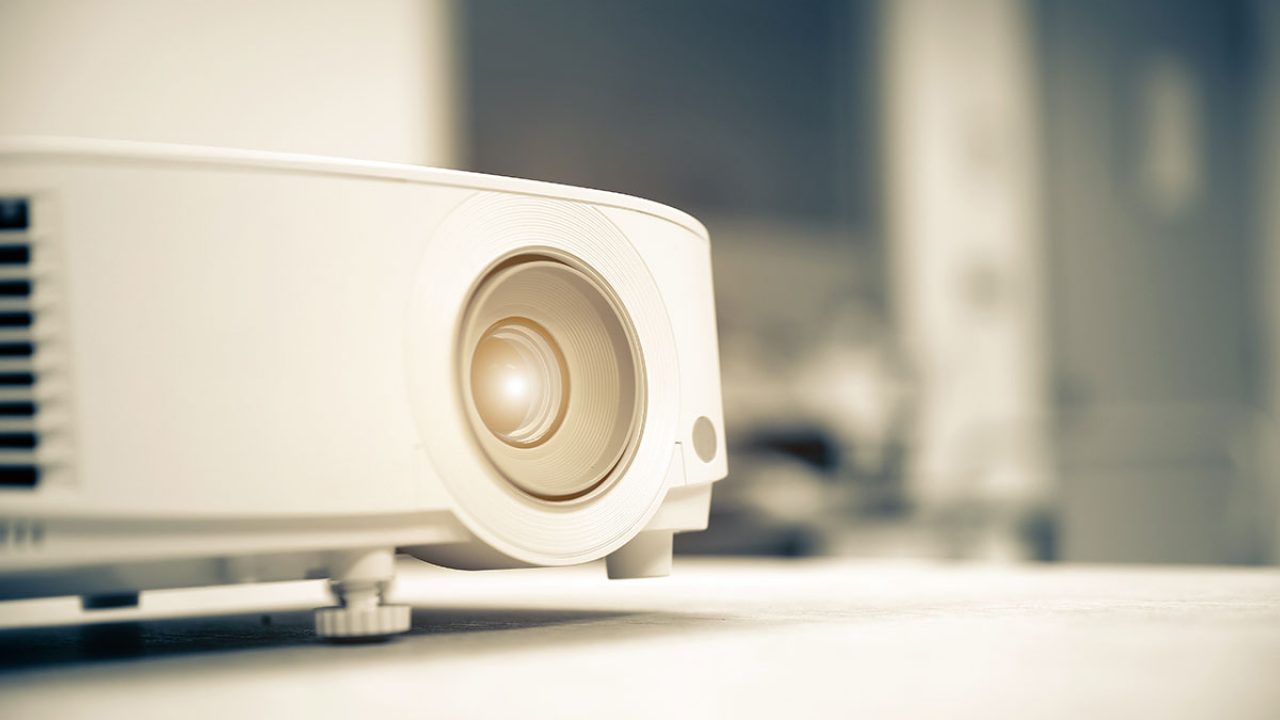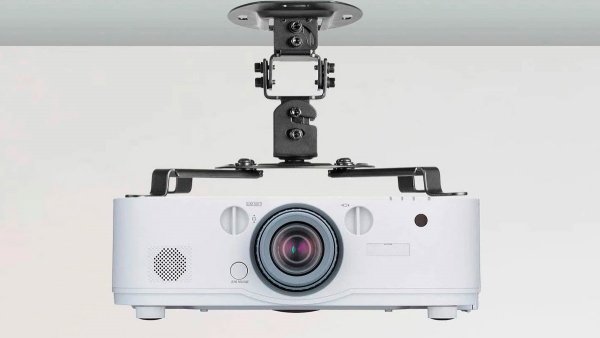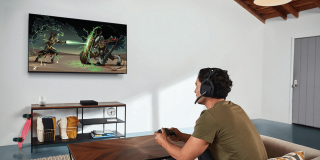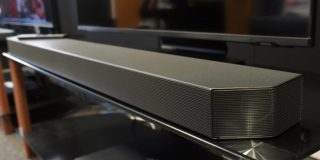What Size Projector Is Best for Movie Watching

There’s a lot that goes into finding the right projector for your home. Even the idea of the projector’s size is often misunderstood, which is why some buyers return their devices and continue shopping.
But if you want to avoid going through a lot of trial and error, we can help. This article will provide a foundation on what to look for in projectors and projector screens.
The Three Projector Screen Aspect Ratios You Need to Know
Picking a projector is as much about the entire home theatre setup as it is about the device itself. Therefore, you need to know what screens to use for the best movie experience.

The 4:3 format is still available but somewhat outdated. This was the format used in older movies and TV shows and has since been superseded by the 16:9 aspect ratio.
If you don’t plan to view old movies, shows, or media, then a 16:9 projector screen is a solid choice. Many movies and shows come in this format, and you’ll be able to watch them without the unappealing black bars on the top and bottom of the picture.
However, you can also opt for the 2.35:1 aspect ratio. This is considered an anamorphic movie theater format. This ratio is also sometimes technically referred to as 2.39:1 or rounded to 2.4:1, depending on the industry professional and standard. The current movie standard uses a 2.39:1 ratio, with the 2.35:1 name remaining out of habit. This extra-wide aspect ratio is the industry standard in terms of cinematic productions. Therefore, it’s your best option for creating a cinema-like experience in the comfort of your home.
However, the anamorphic theater aspect ratio will create letterboxing (black bars) on a 16:9 projector screen. This means your TV shows won’t have the same visual appeal when projected because the 16:9 aspect ratio is the industry standard for the small screen.
So, deciding on the ideal projector screen for your home may come down to the content you’re most likely to project. If you watch more movie productions, then an anamorphic cinematic experience will best suit your needs.
If you prefer to watch TV shows, reality shows, and other small screen content, a 16:9 projector screen will offer the best experience. But there’s one more thing to consider.
The screen size requirements for an anamorphic setup are unfeasible for most home theater setups. Because of this, a 16:10 projector will be the ideal choice for a more cinema-like experience without needing a massive room and thousands of dollars in equipment.
Pairing Your Projector With Your Screen
Once you know the aspect ratio of the content you want to watch, you’ll pretty much know what projector to buy.
In general, you can pick a projector dedicated to your preferred aspect ratio. This is often the most cost-efficient option.
However, you can also get a more advanced model to switch smoothly between aspect ratios. This will be useful if you have multiple projector screens or want more flexibility with your content choices.
Screen Size Buying Tips
Projector screens are designed for two main aspect ratios. That said, it doesn’t mean that they all come in the same size.

The biggest issue most buyers face comes from thinking bigger is better. Of course, watching a movie on a big screen feels more immersive. But remember that you’re working with limited space.
Even though it’s tempting to buy a screen as big as your wall, there are other factors worth considering.
For example, the viewing distance can play a massive role in your movie-watching experience. Watching comfortably implies sitting at a distance where the screen doesn’t take up your entire field of vision.
In general, the screen should occupy 30 degrees of your view. If you’re going for a more cinematic experience, you can make it so that the screen fills 40 degrees of your field of vision instead.
According to some industry best practices, you should stay about 144 inches away from a 120-inch projection screen to have the best cinematic experience.
But figuring all of this out for the inexperienced or less savvy movie enthusiast can be challenging. Fortunately, you can use certain formulas to calculate the best viewing distance or best screen size. In fact, Benq has one of the most comprehensive projection calculators that’s free to use and can help guide your buying decisions.
Projector Resolutions You Need to Know
There are four types of projector resolutions commonly available today:
- WXGA
- FHD
- WUXGA
- 4K UHD
A WXGA or wide extended graphics array has a 16:10 aspect ratio and is a solid choice for widescreen projections. However, it’s often an entry-level choice that doesn’t offer the highest image quality.
FHD projectors, or Full HD projectors, come with an aspect ratio of 16:9 and a 1080p resolution. It can be a reliable choice if you focus more on TV content.
A WUXGA projector has a 1200p resolution or 1920 x 1200 pixels and a 16:10 aspect ratio. This is a much better choice for wide, cinema-like projections.

Lastly, you have the 4K UHD projectors. These have the highest quality resolution available for the average consumer. Although some 8K projectors are already making the rounds, they’re too niche and expensive to worry about now.
A 4K UHD projector comes in at 3840 x 2160 pixels. It will be ideal for larger screens and watching movies as intended in a movie theater. Depending on your preferred content and screen size, you can choose one of these projectors.
However, you may have to do a bit more research regarding the scaling technology. Not all projectors are equally advanced. Usually, pricier models may have superior scaling technology and will help maintain the image quality despite downsizing or stretching the image to fit your screen.
Pixels Often Matter Most
Despite the many influencing factors regarding projectors, buying one will often come down to the number of pixels. Of course, more or bigger isn’t better if you can’t provide the right environment for a high-end setup.
With that in mind, more pixels, or individual points of color, will be the differentiating factor.
If you’re aiming for maximum quality, then you’ll want the highest resolution you can afford. FHD projectors at 1080p can satisfy most casual movie watchers, but enthusiasts and cinephiles will likely prefer 4K UHD projectors that offer more flexible stretching and preserve high image quality.
Let us know what your design plans are for your home theater in the comments section below.
















